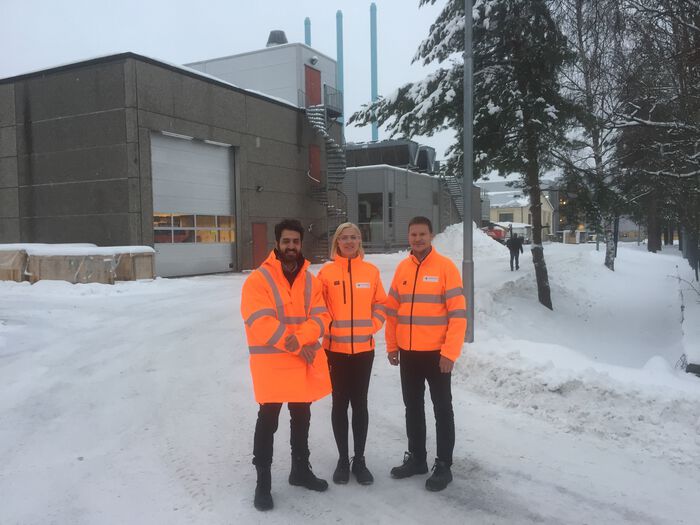From the moment it was discovered in 2010, the giant Johan Sverdrup field has been treated as a flagship project by the Norwegian government, the offshore industry, and especially Equinor, its operator. With present estimates to range between 2.7 and 3.2 billion barrels of oil, the field will remain productive for 50 years. Naturally, its long lifespan has also been subject to criticism, given that Norway is committed to reaching zero emissions by 2050, when the field will presumably still be in operation.
Without ignoring the climate and environmental issues related to oil and gas production, the proximity with the two-year anniversary of Johan Sverdrup marks a good occasion for discussing a remarkable achievement in that project. From a management perspective, the first phase of Johan Sverdrup is a success story like no other in Norway. The $15 billion project was delivered under budget, on time, and it continues to exceed expectations for daily production.
Projects of similar complexity and scale, the so-called megaprojects, are known for having persistent problems with cost overruns and delays. This happens across all industrial sectors and offshore oil and gas is no different. A list with recent megaprojects in Norway gone badly would include Martin Linge, Valhall Redevelopment, Goliat and Yme.
Set in a broader context, the first phase of Johan Sverdrup is part of an institutional transformation in how megaprojects are managed. The idea of clients as mere contract givers, distancing themselves from crucial project activities and just pushing risks onto the supply chain is becoming increasingly outdated. Recent experience with high-profile megaprojects shows that successful clients are devoting more time, people, and money to help contractors succeed in their work.
Most clients are choosing alliance-type contracts as the framework for collaboration, with cost-reimbursable and performance incentives. However, the compensation form alone does not guarantee success. In fact, many alliancing projects have failed to deliver good value for money for their owners. What is worth mentioning about Johan Sverdrup are the several collaborative processes coordinated and paid for by Equinor to complement risk-sharing contracts.
Some of these processes were formalized in advance, like forums for communication on all organizational levels and a robust follow-up strategy at the yards. Others were ad hoc responses to anything that could pose a threat to the project’s completion. If, for instance, contractors needed to study or adjust the FEED; or an engineering company had to change the sequence of deliverables to fit a yard’s fabrication competencies; or when problems abruptly emerged.
The primary concern driving all these different initiatives was safeguarding a very tight schedule. When Equinor announced its plans to start production in the fourth quarter of 2019, it gave them approximately five years to build and install an offshore hub with four large steel jacket platforms, subsea templates, and a pipeline infrastructure. No supplier alone could have delivered that, thus several yards across Norway and abroad would need to get involved.
“This task should scare us all”, said Kjetel Digre, project director for the first phase of Johan Sverdrup. “We could not guarantee that we had full control. There were so many people, so many companies that needed to be involved. If one of them failed, the whole thing could fail”. Warnings of delays were made internally at Equinor and the Norwegian Petroleum Directorate (NPD), before the project was formally approved by the parliament, in 2015. Many thought the schedule targets were very aggressive, and Equinor could miss the weather window before the autumn storms in the North Sea, which would leave them to wait until mid-2020 to restart the installation program.
For Digre, one of the biggest obstacles to meeting the deadline was the adversarial culture inside projects. It is not uncommon for clients and suppliers to become very defensive after a misunderstanding or unexpected problem. “We see that projects start to get problems if you slam the contract on the table. That dominates the atmosphere, triggering both delays and new problems. We couldn’t afford to have that mindset because local contractual disputes in one setting could turn the whole puzzle over”, he said.
Another mantra for Kjetel Digre and others inside the Johan Sverdrup organization was to be more compromising when paying for solutions if they could prevent problems from accumulating and becoming more expensive to solve later. “We don’t want to save one million dollars now, because that could cost us 100 million dollars at a later stage. Go in there, find the solution, spend it, solve it. It costs some money, but you will save a lot if you are continuously stopping all these initiations of problems, rather than letting them sort of escalate”, he said.
One episode illustrates very well how problems were dealt with in the Johan Sverdrup organization. Two prime contractors shared the same sub-supplier in Poland for steel sections, one at a time. However, the first contractor held up the Polish sub-supplier for longer than expected, which would consequently delay the second contractor's work.
Seeing this problem ahead, all parties sat down with Equinor to solve this, and it was agreed that the second contractor would distribute bits and pieces of their section with different local yards to gain time, so that once work for the first contractor was concluded they could finish assembling the rest with the sub-supplier.
All this was agreed upon in a matter of two weeks, and it happened two months before the problem manifested itself. It increased costs, but not too much, and in turn mitigated a risk that could have turned into something much bigger. This episode also tells a lot about another approach to problem solving in Johan Sverdrup.
“We put down as a rule that if you see a problem — doesn’t matter which company you come from — flag it and also own it. If you keep a problem a secret, you have no idea how much that will affect the totality [of the project]. It is a big organic system involving thousands of people and suppliers”.
Johan Sverdrup has many success stories based on collaboration and joint problem solving. A platform topside weighting 23,000 tons finished at record speed, 19 months after the first steel cut, without any safety incidents. The largest construction vessel in the world used for the first time in an installation program, setting records for executing the fastest installation of a completed topside and heaviest single-lift installation to date. One of the steel jackets was the largest one ever built for use on the Norwegian shelf, weighting 26,155 tonnes.

When Japanese management practices started to be studied and replicated in the 80s and 90s, words like Kaizen or Keiretsu were used to translate developments in continuous improvement and inter-firm relations that were typical of these Japanese manufacturers and could be learned by others in different cultural settings.
Reflecting back on Johan Sverdrup, Kjetel Digre used a unique Norwegian word to explain his sentiment towards collaboration in the project. Dugnad is an integral part of Norwegian culture. It is a word used to describe a day where people are mobilized to achieve an end goal based on joint effort.
“It could be to refresh an outdoor part of your local school, it could be to prepare for the national celebration, it could be to fix your friend’s house. You get together in a dugnad to do the work. It is quite a specific Norwegian word and I think that resonates a bit with what we actually established. We were in a dugnad mode. Everything to be open and letting go of our contractual fears to start solving things together”.





